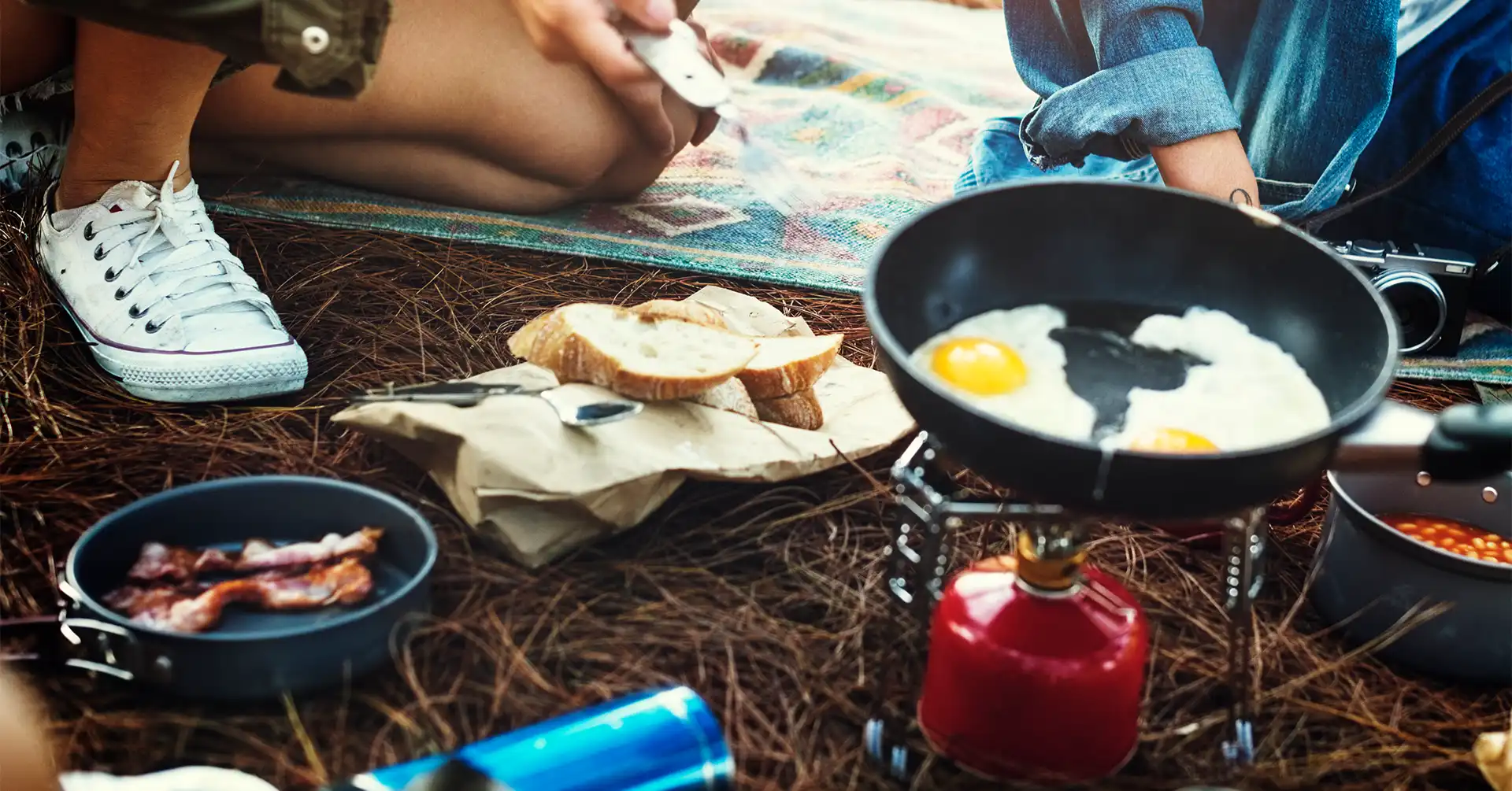Hello, my wonderful readers! Embark on an unforgettable outdoor journey with our ultimate guide to crafting the perfect Camping Food Itinerary! Whether you’re a seasoned wilderness explorer or a first-time camper, mastering your meal plan is essential for a successful adventure. This comprehensive blog will unveil expert tips and tricks to elevate your camping culinary experience to new heights.
With our carefully curated itinerary, you’ll discover the art of balancing convenience, nutrition, and flavor in every meal. Say goodbye to bland trail mix and uninspired canned goods – we’re here to revolutionize your campsite cuisine! From hearty breakfasts that fuel your day to satisfying dinners under the stars, we’ve got you covered with delicious recipes and meal ideas that are easy to prepare over an open flame or portable stove.
Join us as we delve into outdoor cooking, exploring innovative cooking techniques and must-have camping kitchen gear. Whether planning a weekend getaway or an extended backcountry expedition, our Camping Food Itinerary will ensure you stay well-fed and energized throughout your wilderness escapades.
Get ready to tantalize your taste buds and make memories that will last a lifetime – let’s embark on this culinary adventure together!
What a Camping Food Itinerary Consists Of?
When planning a camping trip, one of the most critical aspects is your food itinerary. A well-thought-out camping food itinerary ensures that you have delicious, nutritious meals to fuel your adventures while minimizing hassle and maximizing enjoyment. In this guide, we’ll explore the key components of a camping food itinerary to help you plan and execute memorable outdoor dining experiences.
Meal Planning and Preparation
The foundation of any camping food itinerary begins with meal planning and preparation. Before embarking on your trip, take some time to consider the duration of your stay, the number of campers, dietary restrictions, and any specific preferences or allergies. Create a meal plan that includes breakfast, lunch, dinner, and snacks for each day of your camping adventure.
Ingredients and Supplies
Once you’ve outlined your meal plan, it’s time to gather the necessary ingredients and supplies. Opt for lightweight, non-perishable items that are easy to pack and transport. Consider prepping some ingredients in advance, such as chopping vegetables or marinating meat, to streamline meal preparation at the campsite. Pack essential cooking equipment, such as a portable stove or grill, pots and pans, utensils, and cooking oil.
Breakfast Options
Start your day off right with a hearty and energizing breakfast. Choose options that are quick to prepare and provide sustained energy for outdoor activities. Classic camping breakfasts include oatmeal, granola with dried fruit and nuts, breakfast burritos, or scrambled eggs cooked over a campfire. Indulge in pancakes or French toast cooked on a portable griddle for a special treat.
Lunch Ideas
Lunchtime during a camping trip often calls for light and portable meals to be enjoyed on the go. Sandwiches, wraps, and salads are popular choices for lunch, as they require minimal preparation and can be customized to suit individual tastes. Consider packing a variety of fillings, such as deli meats, cheese, hummus, fresh vegetables, and bread or tortillas. Remember to include snacks like trail mix, fruit, and energy bars to keep hunger at bay between meals.
Dinner Recipes
Dinnertime at the campsite is an opportunity to unwind and savor a satisfying meal after a day of outdoor adventures. Plan dinners that are easy to cook over a campfire or portable stove and provide a comforting end to the day. One-pot meals, such as chili, stew, or pasta dishes, are convenient options that require minimal cleanup. Alternatively, embrace the tradition of cooking foil packet meals, where ingredients are wrapped in foil and cooked directly over hot coals for a delicious and fuss-free dinner.
Snack Selection
Snacks are essential for maintaining energy levels and staving off hunger throughout the day. Pack snacks easy to grab and munch on while hiking, fishing, or relaxing at the campsite. Nuts, dried fruit, jerky, crackers, and cheese are nutritious and portable options that boost energy. Consider bringing some indulgent treats like chocolate, marshmallows, or cookies for a sweet reward after a day of outdoor exploration.
Hydration Strategies
Staying hydrated is crucial for enjoying a safe and comfortable camping experience. Pack plenty of water for drinking and cooking, especially if camping in a remote or arid location where water sources may be limited. Consider bringing a portable water filtration system or purification tablets to ensure access to clean drinking water during your trip. Additionally, avoid excessive consumption of caffeinated or alcoholic beverages, as they can contribute to dehydration.
A well-planned camping food itinerary is the key to enjoying delicious meals and memorable dining experiences in the great outdoors. By carefully considering your meal options, gathering the necessary ingredients and supplies, and incorporating a variety of breakfast, lunch, dinner, and snack choices, you can ensure that every mealtime during your camping trip is satisfying and enjoyable.
What Foods Are Considered Camping Food?
Embarking on a camping trip is not just about communing with nature; it’s also an opportunity to savor delicious meals under the open sky. Knowing what foods to pack can make or break your outdoor culinary experience. In this guide, we’ll explore various foods considered essential for camping adventures, ensuring you’re well-prepared to enjoy hearty and satisfying meals in the great outdoors.
Non-Perishable Staples:
When planning your camping food list, prioritize non-perishable items that can withstand the rigors of outdoor conditions. These staples ensure you have a reliable source of sustenance without refrigeration throughout your trip. Examples include:
- Canned beans, soups, and stews
- Dried fruits and nuts
- Crackers and bread
- Instant oatmeal or cereal
- Shelf-stable milk or powdered milk
- Nut butter and jelly for quick sandwiches
Dehydrated and Freeze-Dried Meals:
Dehydrated and freeze-dried meals are lightweight, space-saving options perfect for camping trips. These meals often require just hot water to rehydrate, making them convenient for outdoor cooking. Look for varieties that offer a balance of nutrients and flavors, such as:
- Dehydrated backpacking meals (e.g., pasta dishes, curries, chili)
- Freeze-dried fruits and vegetables
- Instant rice or couscous
- Pre-packaged freeze-dried breakfasts (e.g., scrambled eggs, oatmeal)
Fresh Produce:
While fresh produce may not have a long shelf life, including some perishable items can enhance your meals’ nutritional quality and taste. Opt for fruits and vegetables that are sturdy and less prone to bruising, such as:
- Apples, oranges, and bananas
- Carrots, bell peppers, and cherry tomatoes
- Potatoes and onions (which can last several days if stored properly)
- Leafy greens (if consumed early in the trip)
Proteins:
Protein-rich foods are essential for maintaining energy levels and supporting muscle recovery during outdoor activities. Incorporate a mix of animal and plant-based proteins to diversify your meals. Consider packing:
- Canned tuna, salmon, or chicken
- Beef jerky or dried sausage
- Shelf-stable tofu or tempeh
- Packaged nuts and seeds
- Legumes such as lentils, chickpeas, and black beans
Condiments and Flavor Enhancers:
Elevate the taste of your camping meals with condiments and flavor enhancers. While these items may seem small, they can significantly impact the overall enjoyment of your dishes. Don’t forget to pack:
- Salt, pepper, and your favorite spices
- Hot sauce or chili flakes
- Olive oil or cooking spray
- Soy sauce or tamari
- Mustard, ketchup, and mayo packets
Snacks and Treats:
Keep hunger at bay between meals with snacks and treats that provide quick bursts of energy. Opt for portable options that won’t weigh you down during hikes or outdoor activities. Popular choices include:
- Trail mix with nuts, dried fruit, and chocolate
- Granola bars or energy bars
- Jerky or meat sticks
- Crackers and cheese
- Chocolate or candy for a sweet indulgence
From non-perishable staples to protein-packed options and flavorful condiments, the key to a successful camping food plan is variety and versatility. Including a mix of shelf-stable essentials, lightweight dehydrated meals, and fresh produce ensures that your camping cuisine is both nourishing and delicious. With careful planning and preparation, you’ll be ready to enjoy memorable meals amidst the beauty of the great outdoors.
Conclusion
Mastering your Camping Food Itinerary is the gateway to a remarkable outdoor adventure. By carefully planning and packing a diverse array of nourishing and flavorful foods, you can elevate your camping experience to new heights. Whether you’re fueling up for a day of exploration or winding down around the campfire, the meals you prepare will play a central role in creating lasting memories.
Focusing on convenience, nutrition, and taste, our guide has equipped you with the knowledge and inspiration to craft satisfying meals in the wilderness. From hearty breakfasts to hearty dinners, each dish is an opportunity to savor the simplicity and beauty of outdoor cooking.
As you embark on your next camping excursion, embrace the journey and savor every bite. With the right Camping Food Itinerary in hand, you’re not just nourishing your body but feeding your spirit and fueling your sense of adventure. So pack your provisions, hit the trails, and prepare for a culinary odyssey amidst nature’s splendor.
Read More:






